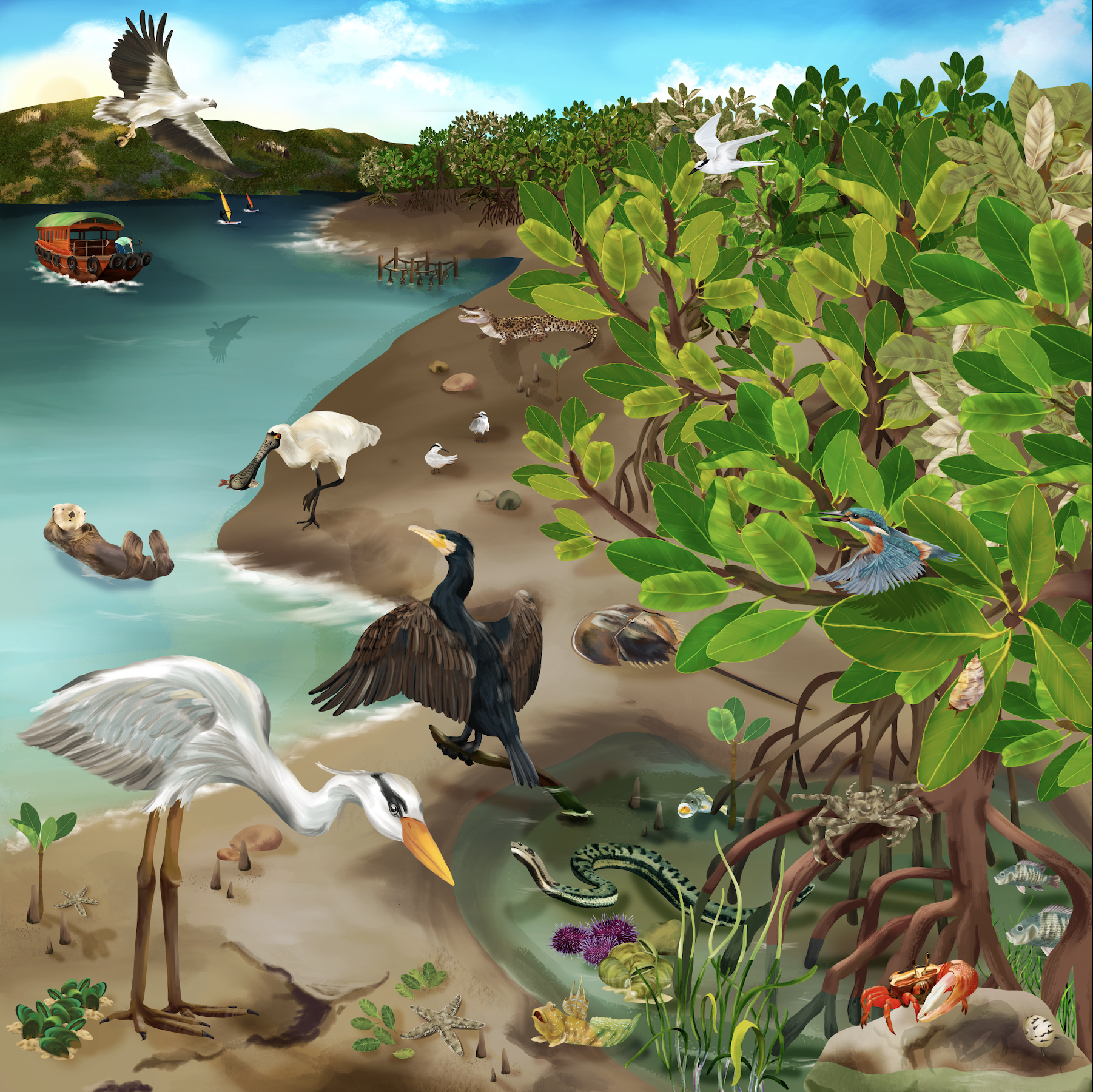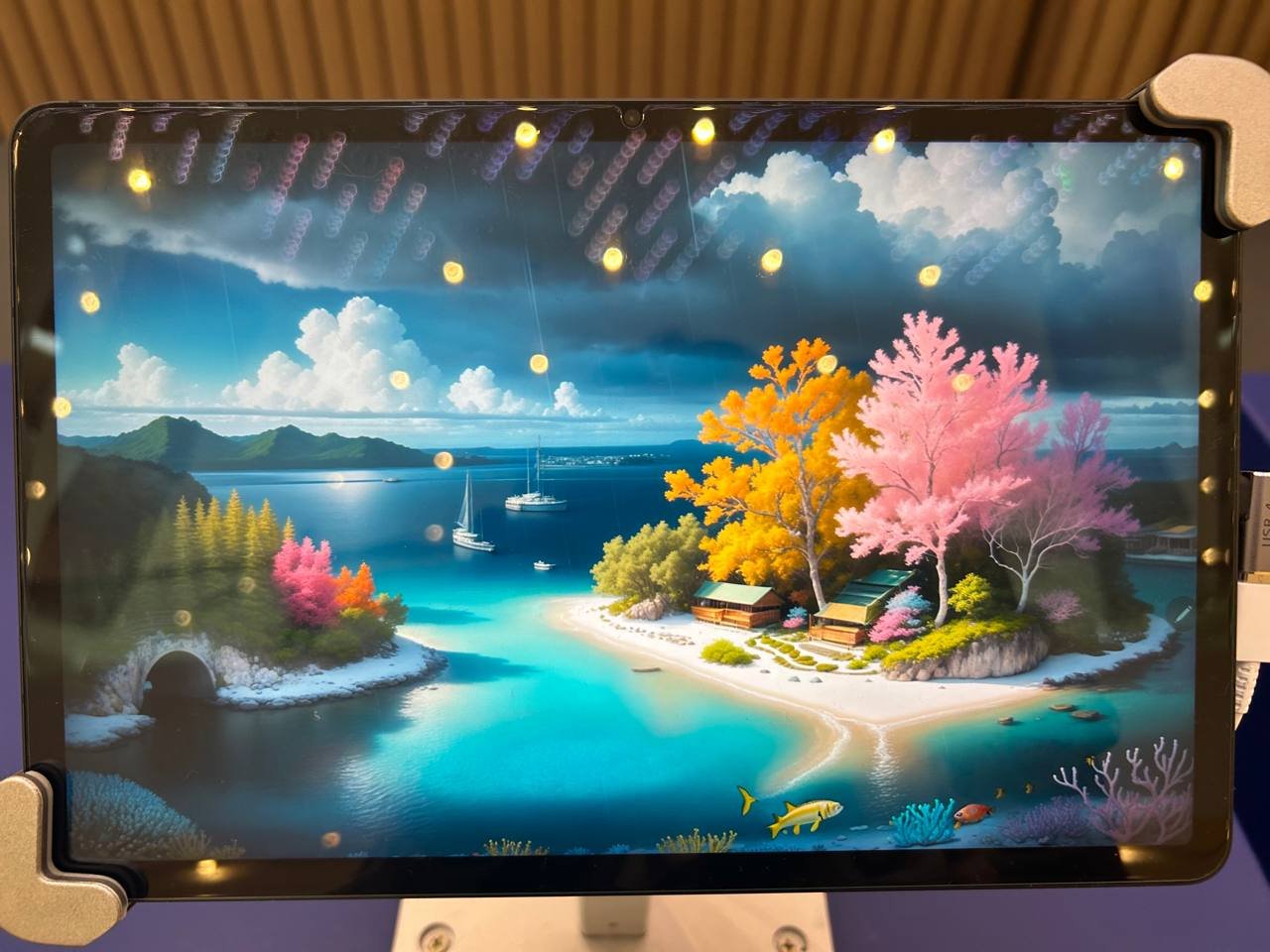Oceans Tomorrow: Our City, Our Sea
We can only protect what we love, and we can only love what we understand. So how can we invite everyone into the world of ecology?
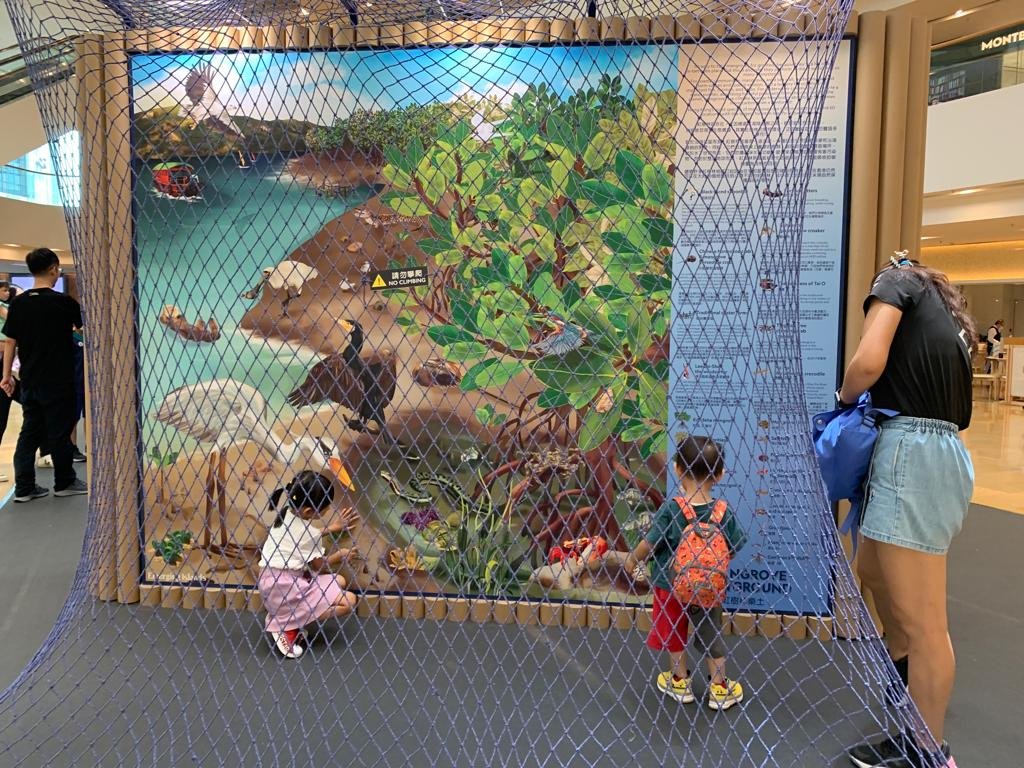

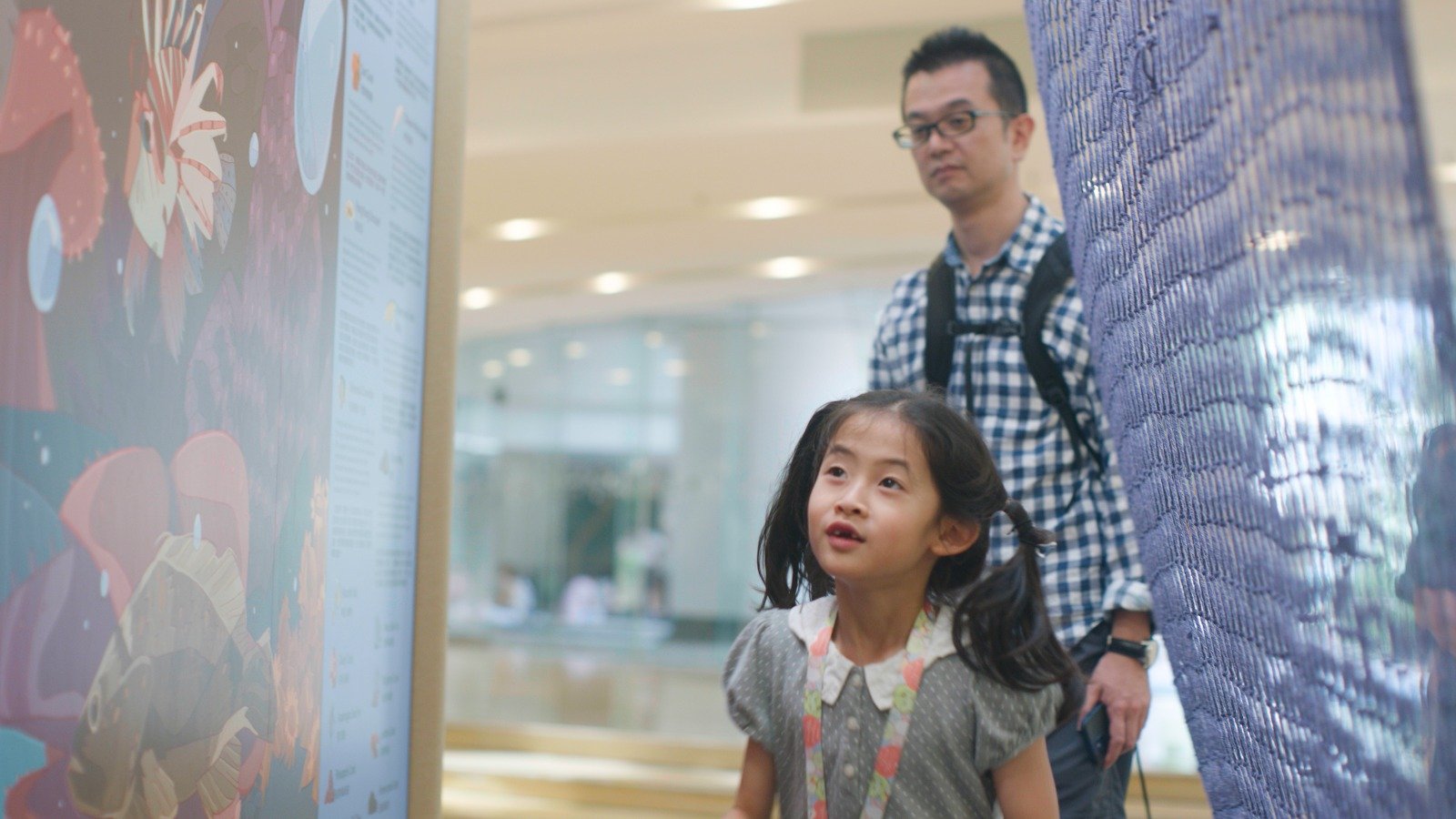

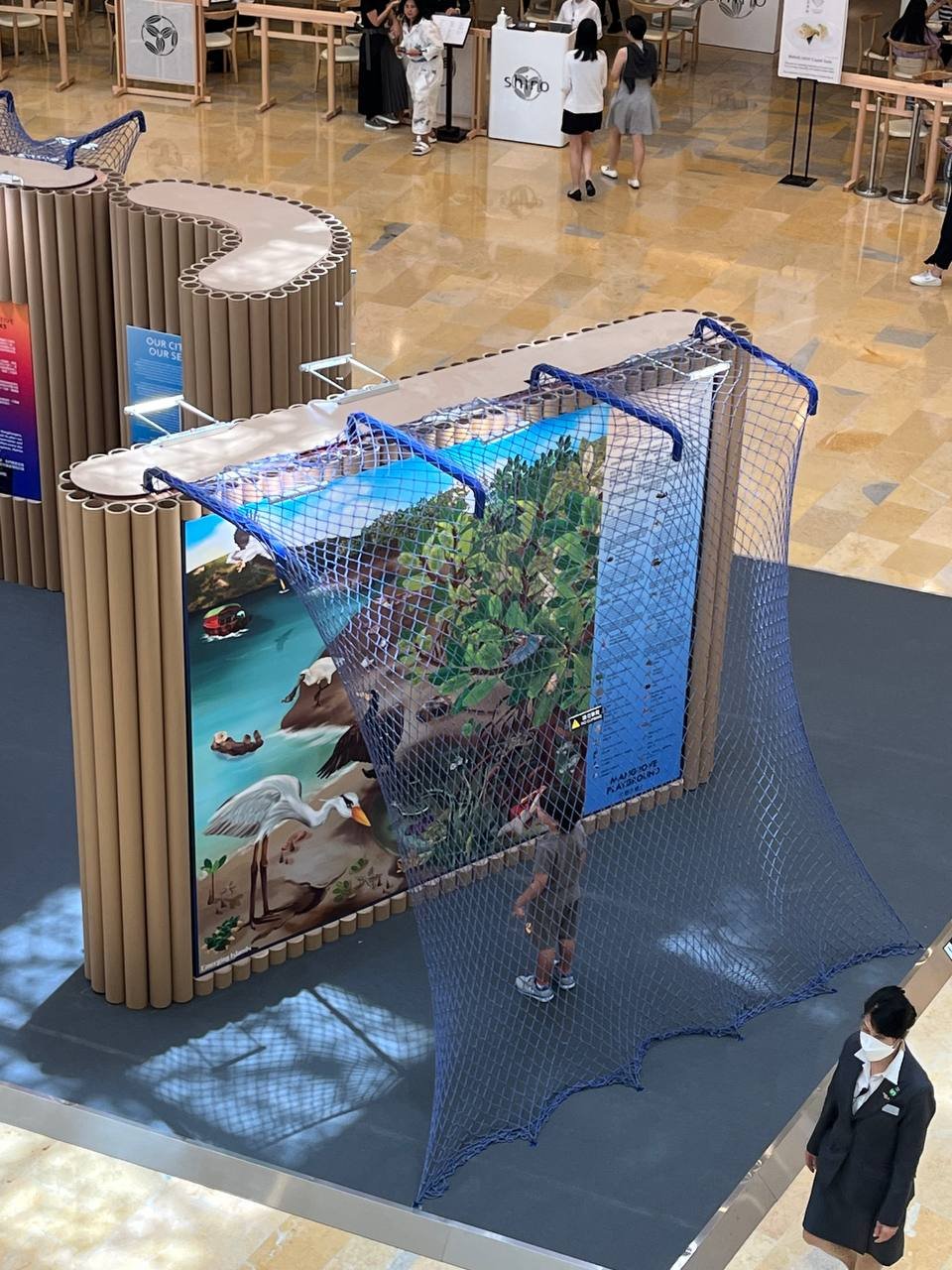
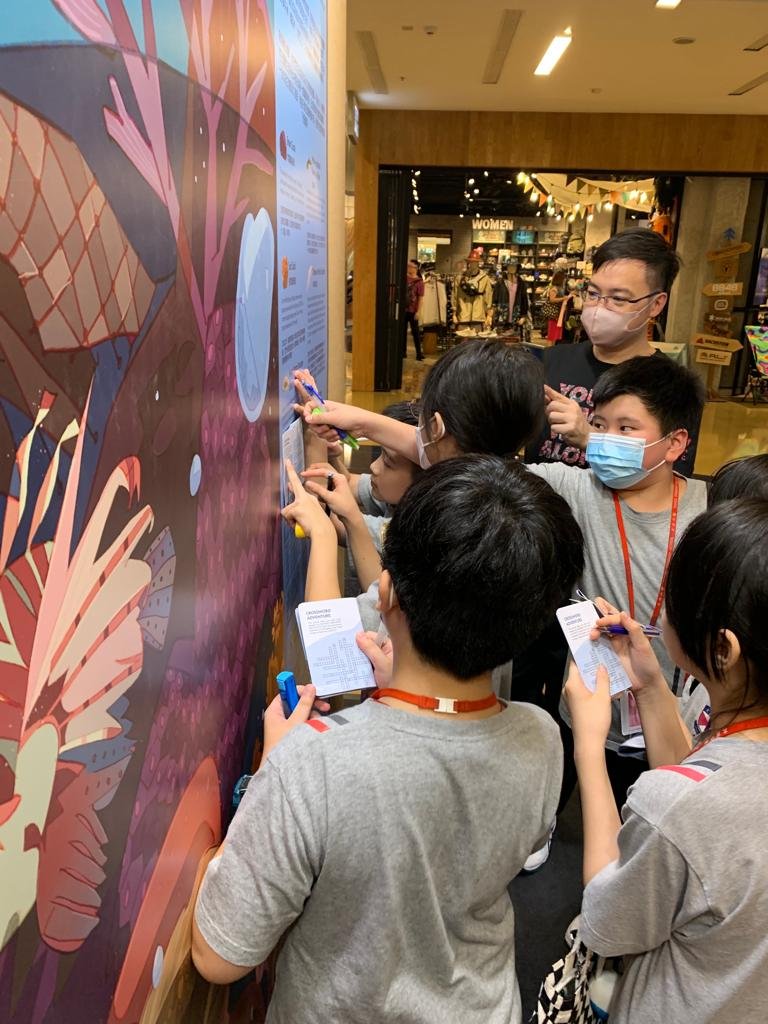
National Geographic asked us to curate an exhibit around Oceans Tomorrow, a campaign presented by Swire Trust and supported by Swire Properties, aiming to connect the city of Hong Kong to the incredible yet overlooked marine biodiversity that surrounds this tiny but mighty island city. In response, we came up with Our City, Our Sea: part-exhibit, part-alternative learning space, part-community story.
A regional interdisciplinary collaboration with Hong Kong visual effects artist Victor Wong, Hong Kong architectural design studio BEAMS Creative, and Filipino illustrators Glenford Lumbao, Anina Rubio, and Aila Torre, Our City, Our Sea will travel through three shopping malls in Hong Kong (the shopping mall being the de-facto public space common to many Asian cities). The first leg was staged from August 25 to Sept 10 in Pacific Place, the second leg is from September 11 to October 8 in Cityplaza, and the final leg is from October 11 to 23 in Citygate. Our City, Our Sea invites passers-by of all walks of life, be they students or shoppers, young or old, into a learning expedition to reconnect not just with Hong Kong’s ocean life, but also with many ways that the ocean has shaped the city of Hong Kong itself.
While Hong Kong has never lost its connection to the ocean, it’s easy to forget to appreciate what’s around us in the everyday bustle of a modern city. The name Hong Kong means “Fragrant Harbour,” and most Hong Kongers still remember that the city started off as a tiny fishing village. However, less people are familiar with the fact that Hong Kong is still home to nearly six thousand species of marine life, more hard coral species than the Carribean, and more reef fish species than Hawaii — all of which represents more than a quarter of China’s marine biodiversity! As with most of the world’s great cities, it is no accident that the cultural diversity that has made Hong Kong what it is today echoes the rich natural diversity that historically converged on this unique island.
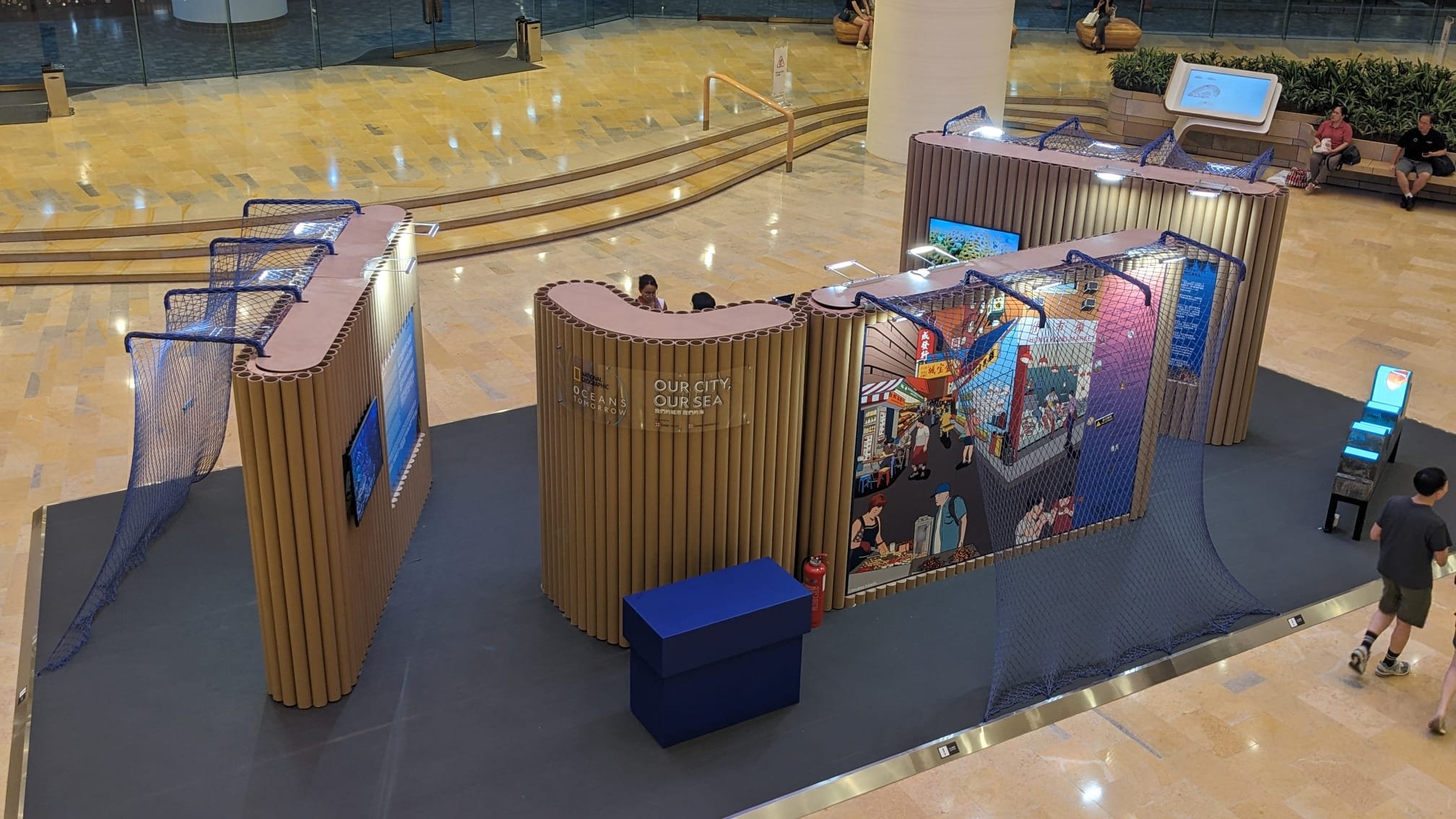
Hong Kong artist Victor Wong and his studio animated the murals using AR: people could use their phones to see creatures from each ecosystem swim/float/and crawl around the exhibit.
Pictured above: A screengrab of the animation of the Our Reef mural. Art by Glenford Lumbao and animation by Victor Wong.
We structured the exhibit around three ecosystems: Our Reef, Our Coast, Our City (yes, a city is an ecosystem after all!). Then we invited people to reconnect with the ocean in three ways:
To EXPLORE the murals of Our Reef, Our Coast, and Our City that we created with three artists, Glendford Lumbao, Anina Rubio, and Aila Torre, each filled with local critters and the stories they tell.
To LISTEN to National Geographic explorers who are dedicated to studying and saving Hong Kong’s marine life and ocean history, namely, Laurel Chor, Jonathan Cybulski, and Stan Shea;
To PLAY a role in imagining and protecting Hong Kong’s oceans of tomorrow through several interactive games.
The exhibit also features Dream City, a mixed-media sculpture created by Hong Kong artist Victor Wong as an ode to the city’s famous skyline. In the spirit of community storytelling, the artwork is programmed with the work of students from the Oceans Tomorrow workshops: images of the nature journals they drew with the guidance of Hong Kong artist Jonathan Jay Lee flicker over the sculpture, while a song about ocean conservation that the students co-created with Hong Kong singer-songwriter Jodie Chan (artist name: Joya) plays on repeat.
The dynamic quality of Oceans Tomorrow: Our City, Our Sea is designed to engage different aspects of the human experience. Because if we want to save the world’s seas, we need to use our minds and our hearts, our curiosity and our creativity, our words and our actions.
As part of the play feature, we created “What’s Your Vision of Hong Kong’s Oceans of Tomorrow,” an AI game where people can generate their own image of the future seascape of Hong Kong by answering a series of speculative prompts.
To deepen the exhibit’s engagement, we designed a workshop experience around the exhibit itself. We created a workbook and teaching guide, so that any teacher that has participated in the workshop can then guide their own students through the exhibit, thus growing the reach and impact of Oceans Tomorrow.
Just as the waters around Hong Kong connect the island to the oceans of the world — there is only one ocean, in truth — we believe that any human experience can lead us back to ecology. All around us, invitations to explore, to listen, to play abound. The journey itself promises wonder, wisdom, and joy. All we need to do is to respond.
By co-creating dynamic and accessible ecological learning experiences such as Oceans Tomorrow, we hope to make that first step into a right relationship with the world just a little bit easier!


